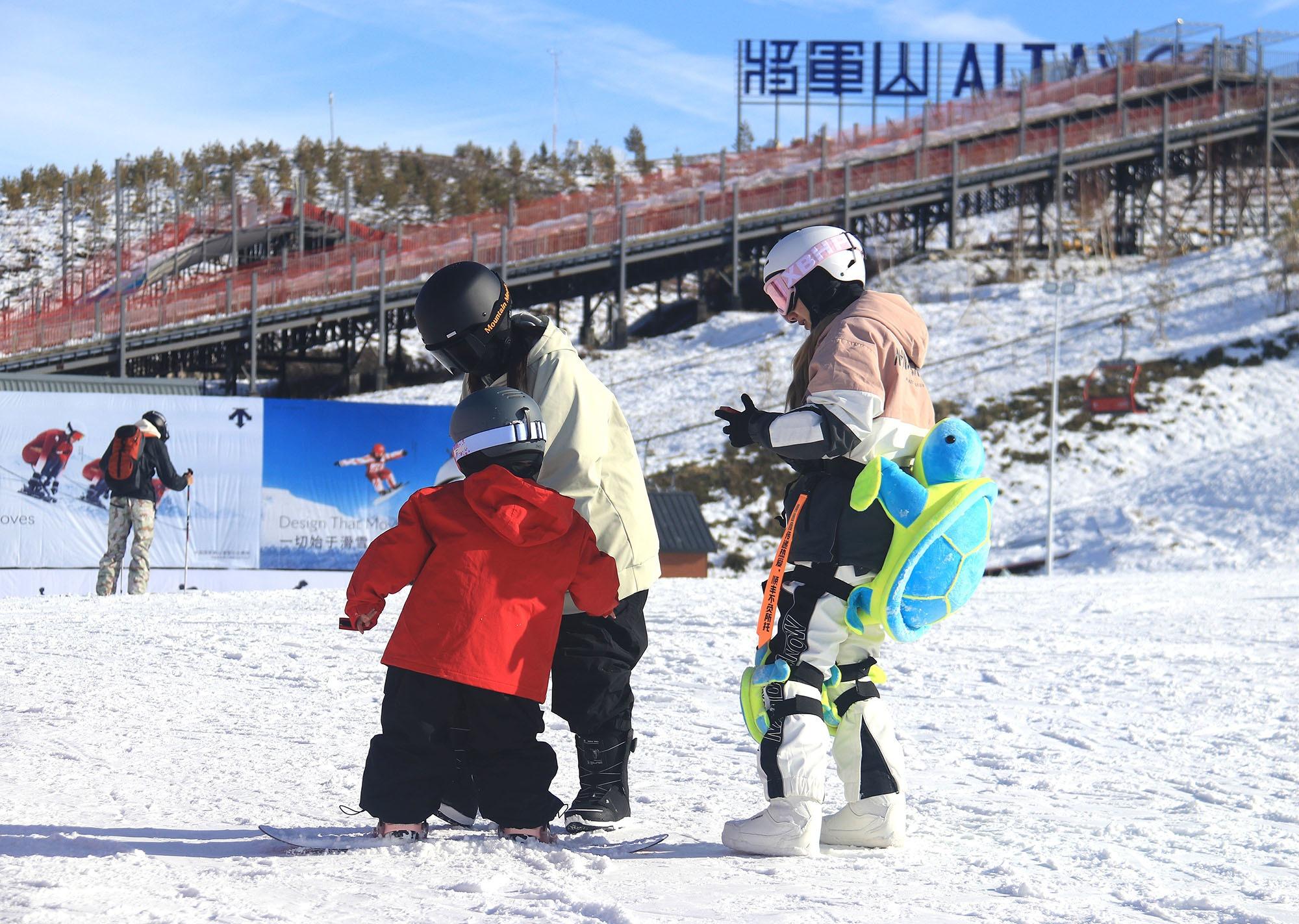 Tourists enjoy a light moment at a ski resort in Altay, Xinjiang Uygur autonomous region, on Nov 9, 2023. (TANG XIAOBO / FOR CHINA DAILY)
Tourists enjoy a light moment at a ski resort in Altay, Xinjiang Uygur autonomous region, on Nov 9, 2023. (TANG XIAOBO / FOR CHINA DAILY)
Short videos featuring snow-covered Harbin, the capital of Northeast China's Heilongjiang province, have gone viral on Douyin — the Chinese version of TikTok, with the city being jokingly described by netizens as the "Chinese Hogwarts" because the city's Western-style architecture is very much like that in the Harry Potter series.
"I can't wait to travel to this place of ice and snow! I was imagining having a snowball fight and skiing while I was watching these breathtaking snow views on Douyin," said Liu Qing, a 27-year-old from the southern province of Guangdong.
"It's rare to see snow in Shenzhen — the city where I now live and work, because of its low latitude and high temperature in winter," Liu said, adding that she was planning to spend her annual vacation in some northern cities in December.
Liu is not alone. The cooling temperature and rain and snow across the nation have aroused people's enthusiasm for ice and snow-themed tourism, as well as winter sports.
Tourism industry insiders said that the snow season this year — roughly from November to March 2024, is the first complete one since the Beijing 2022 Winter Olympics, and it is expected to see the strong growth of winter tourism and winter sports.
Qi Chunguang, vice-president of Tuniu, an online travel services provider, said: "China saw a sudden wave of falling temperatures and rainy and snowy weather from mid-October, and some skiing resorts have seen a surge in bookings."
"On our platform, searches for winter tourism-related products have increased significantly, with a growth of 124 percent in October compared with September. Also, searches for products related to frosty and snowy views, ice-themed parks and skiing resorts all tripled in October from the previous month," Qi said.
Other travel portals have also reported similarly encouraging news. Online travel agency Trip.com Group said that in the weeklong period starting from Nov 4, searches for "hot springs" and "skiing" registered a growth of 50 percent from the previous week.
Cities including Zhangjiakou and Baoding in Hebei province, Harbin in Heilongjiang and Jinzhong in Shanxi province are so far the top choices for its customers seeking to go skiing, according to Trip.com.
Figures from travel portal Qunar showed that starting Nov 1, searches for skiing-related products on its platform have seen a threefold increase from the same period in October, and bookings for ski resorts grew by 147 percent during the period compared with 2019 — before the COVID-19 pandemic.
Qi, Tuniu's vice-president, said that the Beijing 2022 Winter Olympics served as a strong driver for the promotion of winter sports, and more young people have got interested and involved in winter sports.
"What's more, people from the warmer southern provinces (such as Guangdong and Fujian) have a greater interest in winter tourism, thanks to the popularity of indoor ski slopes and ice-themed parks in those areas," Qi said. "Nearly 70 percent of winter tour bookings on our platform are made by people from southern provinces."
In addition to the increasingly popular snow-covered destinations, places with hot springs are also attractive to travelers.
Trip.com Group said that between Nov 4 and 8, which was the "Start of Winter", the 19th solar term of the year, bookings for attractions with hot springs increased by 140 percent compared with the previous five days. The agency's data shows that Chongqing, Beijing and Jiangsu province's Changzhou are so far the three most popular domestic destinations for hot springs.


